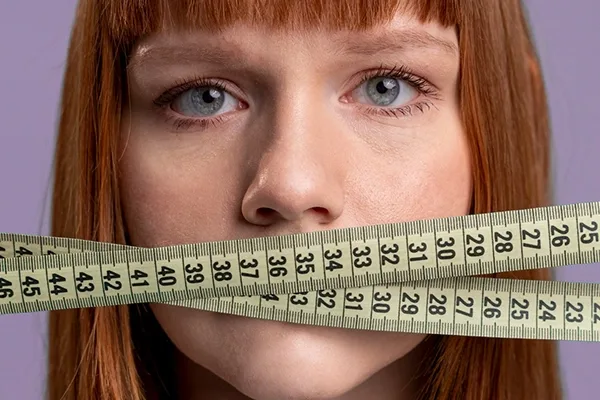What Does Your Visual BMI Reveal About Your Body Shape?
Visual BMI shows how BMI numbers look on real bodies:
- Under 18.5 = lean, little fat
- 18.5-24.9 = balanced proportions
- 25-29.9 = fuller mid-section
- 30+ = pronounced fat deposits
Learn to calculate Visual BMI, spot its limits, and pair it with body-fat and waist-ratio checks for a truer picture of health.
When it comes to understanding health and fitness, the Body Mass Index (BMI) is one of the most commonly used tools. BMI is a simple calculation based on height and weight, designed to estimate whether an individual falls within a healthy weight range. While the BMI numbers provide useful insights, they often leave people wondering: What does this number actually mean for my body shape and figure? In this blog post, we’ll take a visual approach to understanding the connection between BMI and body shape. We will also explain how to calculate it using inches and pounds.

What Is BMI and Why Is It Important?
BMI is a numerical value derived from the ratio of an individual’s weight to their height. You can use it as a screening tool to assess whether someone is underweight, at a healthy weight, overweight, or obese. While BMI doesn’t directly measure body fat percentage or physical fitness, it provides a general idea of whether a person’s weight is proportional to their height.
The BMI categories are as follows:
- Underweight: BMI below 18.5
- Normal weight: BMI between 18.5 and 24.9
- Overweight: BMI between 25 and 29.9
- Obese: BMI of 30 and above
Even though these categories are helpful benchmarks, they don’t account for factors like muscle mass, bone density, or fat distribution. For this reason, many people turn to visual BMI guides to better understand how BMI scores might relate to their actual figure.

How to Calculate BMI Using Inches and Pounds
If you’re in the United States, you may want to calculate your BMI using the imperial system (inches and pounds). The formula is as follows:
BMI = (Weight in pounds ÷ (Height in inches × Height in inches)) × 703
Let’s break it down with an example:
- Weight: 150 pounds
- Height: 65 inches (5 feet, 5 inches)
Plugging the numbers into the formula:
BMI = (150 ÷ (65 × 65)) × 703
= (150 ÷ 4,225) × 703 ≈ 24.9
This person would fall into the “normal weight” category.
Weight
Height
Age

Visual BMI: What Does Each Category Look Like?
While numbers are helpful, they don’t always provide the full picture. Visual BMI tools and charts help people see how BMI corresponds to body appearance by illustrating figures for various BMI ranges. Here’s what each category might look like in terms of body shape and figure:
1. Underweight (BMI < 18.5)
People in the underweight category often have a lean or thin appearance. This might mean very low muscle or fat stores, and in some cases, bones may be more visible. While some individuals naturally have a slender frame, being underweight can sometimes indicate a lack of adequate nutrition or underlying health conditions—start with a healthy meal plan.
Visual Characteristics:
- Narrow shoulders and hips
- Little visible fat
- Prominent collarbones and ribs
2. Normal Weight (BMI 18.5 – 24.9)
The “normal weight” category is considered the healthy range for most people. Individuals in this range typically have a balanced amount of fat and muscle for their height. Body shapes within this range can vary widely, but the general proportions align with what is considered medically healthy.
Visual Characteristics:
- Proportional figure with moderate fat and muscle
- Waist-to-hip ratio is generally balanced
- Visible muscle definition in some cases
3. Overweight (BMI 25 – 29.9)
The overweight category often reflects individuals who carry extra body fat. However, it’s important to note that some people, such as athletes with high muscle mass, may fall into this category while maintaining excellent health. For others, this range can indicate an increased risk of developing weight-related health conditions.
Visual Characteristics:
- Fuller body shape with visible fat around the midsection
- Rounded face and limbs
- Less muscle definition
If you are looking for effective weight loss strategies, cardio is a proven way to lower BMI.
4. Obese (BMI ≥ 30)
Obesity is associated with higher levels of body fat and is often linked to increased health risks, including heart disease, diabetes, and joint problems. Depending on the BMI score, obesity is further divided into three classes: Class 1 (BMI 30–34.9), Class 2 (BMI 35–39.9), and Class 3 (BMI 40+), also known as severe or morbid obesity.
Visual Characteristics:
- Larger body size with significant fat accumulation
- Rounded abdomen and broader figure
- Less visible muscle definition
Looking for faster solutions? Consider our non-surgical fat reduction options at elegant hoopoe.

Why BMI Isn’t the Full Picture
While BMI is a useful starting point, it’s important to remember that it doesn’t account for individual differences in body composition. For example:
- Muscle vs. Fat: Muscle weighs more than fat, so athletes have a higher BMI because of their high muscle mass, despite being in excellent physical condition.
- Fat Distribution: BMI doesn’t reveal where fat is stored in the body, which can be a critical factor in assessing health risks. For instance, excess fat around the abdomen (visceral fat) is more harmful than fat stored elsewhere.
- Bone Density and Genetics: People with dense bones or naturally larger frames may have a higher BMI without being unhealthy.
For a more complete picture of health, consider pairing BMI with other measurements like body fat percentage, waist-to-hip ratio, and overall fitness assessments.

How to Use Visual BMI Tools
Visual BMI tools and charts are widely available online and can help you better understand how BMI scores translate to body appearance. These tools often include side-by-side comparisons of figures representing different BMI ranges, giving you a clearer idea of how your BMI might correlate with your physical shape.
When using visual BMI tools, remember that they are generalizations and may not perfectly align with your unique body type. Instead, use them as a guide to understand your BMI score in a broader context.
If stubborn belly fat persists, explore our clinic’s visceral-fat reduction guide.
Final Thoughts
Understanding BMI is about more than just numbers—it’s about gaining insight into your overall health and how it relates to your body composition and figure. While tools like visual BMI can help bridge the gap between numbers and appearance, it’s essential to remember that BMI is just one piece of the puzzle. To maintain a healthy lifestyle, focus on balanced nutrition, regular exercise, and consulting healthcare professionals for personalized advice.
By combining the practical insights of BMI with a visual understanding of body appearance, you can take a more informed and holistic approach to your health journey.
References








